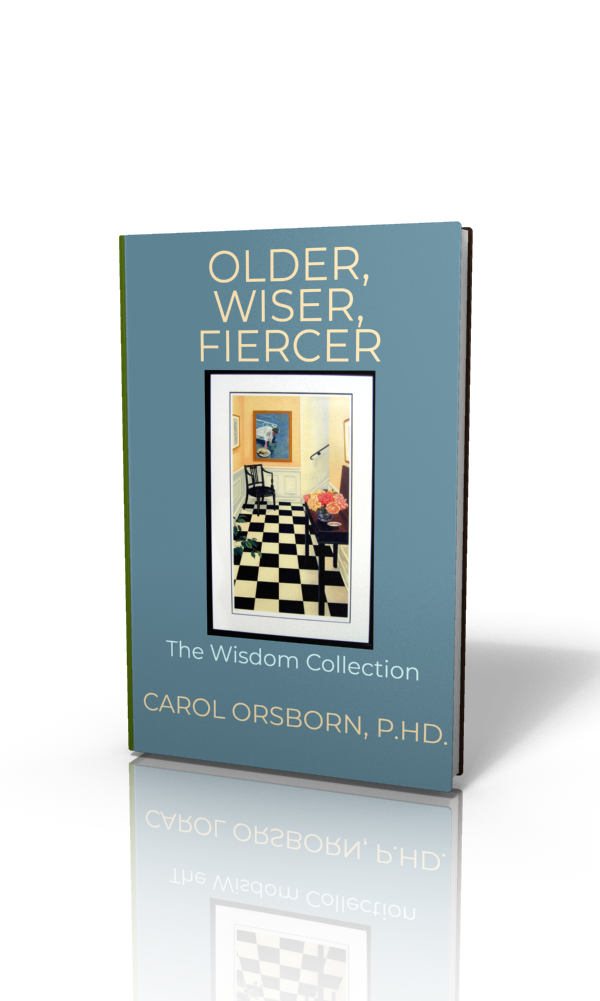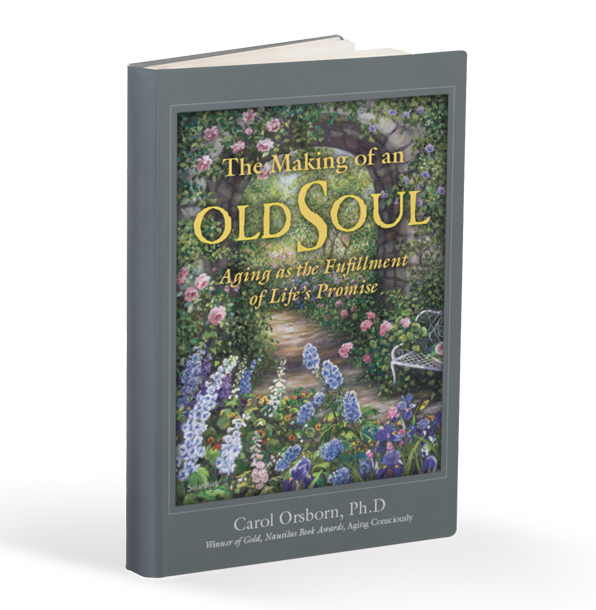This compelling new novel by Carol Orsborn tells the story of Angelica Goodman Banks, a celebrated self-help guru facing a mortal illness. Angelica’s Last Breath inspires us to ask whether it could be possible to make peace with our past, present and future earlier than one’s last breath— with time to spare? The book is as honest and engaging as it is spiritual, pointing the way towards a triumph of the spirit that leaves nothing out.
ABOUT THE BOOK: MY WALK WITH TOLSTOY
By Author Carol Orsborn
Closing in on the age of 70, I read books about death and dying the way in high school I devoured college catalogs, and when expecting, parenting manuals. Studying the next stage of life has always given me a sense of control over the future-a leg up on the unknown. Not every 70-year-old, nor 80-year-old for that matter, is as curious about death as am I, and I say good for you. If staying focused on the short-term challenges of daily living brings you meaning and fulfillment-go for it. But know, too, that there may come a time when one no longer needs to read even one more helpful book about menopause, starting an encore career or finding the best place to retire. Call it success. One has settled the pressing issues in life and has, at last, full freedom to shift one’s focus to questions of ultimate meaning. What is the purpose of life? Have I made the most of my time here? What is just over my next horizon?
At this age and stage of my life, I know that I am far from alone in failing to break the unrelenting stare of mortality. We’re not just talking theory here, but the merciless reality of facing one’s own death. For all our sake, I trust that there is some meaning and purpose in responding to this urge to turn one’s gaze forward to the boundary between life and death, no matter the cost.
Discovering Death
So once again, as I did when transiting earlier life stages, I read. Some of my favorites included Kathleen Dowling Singh’s The Grace in Dying and Irvin D. Yalom’s Staring at the Sun. I re-read passages in Thomas Merton, Joan Chittister, Ram Dass and Kubler-Ross. I also did a deep dive into my own tradition, Judaism, spending time with Jewish rabbis and texts.
I learned a lot, but my unresolved feelings about death-ranging from mild curiosity to outright horror-persisted. Then, one rainy afternoon, thumbing through the spirituality section of my local used bookstore, I stumbled upon a dog-eared copy of Leo Tolstoy’s 1886 classic The Death of Ivan Ilyich. I am perhaps the only person with a doctorate in religion who had somehow made it through her education without ever having been assigned this book, considered by many to be the greatest novella of all time. Most of our doctors have a copy of this work on their bookshelves, included by many schools as an essential part of medical training, providing compelling insight into the experience of death and dying. I grabbed the thin volume from its dusty perch, realizing that without it, my education would be incomplete.
The Death of Ivan Ilyich is a quick read-but not an easy one. Like a deer caught in the headlights, I read it through in one sitting. And I disliked it. The character Ivan Ilyich, an opportunistic judge who thought more of himself than the facts of his life merited, disturbed me. His weak defenses against the onset of illness, the lack of sincere care and support he experienced from his family, associates and friends, and the unwitting contributions he made to his own suffering disturbed me even more. Even his redemption and salvation, which arrived tardily along with his last dying breath, struck me as too little, too late. For such a short book, Ivan Ilyich certainly took his time dying. I put the book down, but the story wouldn’t release its grip on me.
Close Encounter
I am no newcomer to death and dying. In addition to the books I’d read, I had my own close encounter when I was in my forties, just a few years older than Ivan’s 45. Just as I was completing my masters of theological studies at Vanderbilt Divinity School, on the very day I received my admissions letter to the university’s doctoral program in the History and Critical Theory of Religion, I was diagnosed with stage two breast cancer. While there were moments of despair and sheer outright terror, many aspects of my own journey through a life-threatening illness-even the most painful parts where I was sacrificing body parts along with illusions of immortality-couldn’t have been more different (and better) than Ivan’s experience. Throughout, I was supported by loving family, friends, and doctors. When things looked good, I maintained an optimistic attitude. When things looked grim, I felt embraced and held by a loving and compassionate God. As the days, weeks and months unfolded, the news was often more promising than not. At some early point, I was graced with the conviction that I would survive, and I did.
So why-almost twenty years later–was I still reaching out for books about death and dying, searching for answers? Because at 40-something, a brush with mortality is, indeed, something from which you can hope to recover. I prayed for healing and got it. But now, approaching 70, for what should I pray? Aging, unlike breast cancer, is not a disease to be cured and life at its best is not survivable. And, too, while still in my forties, I more or less bounded out of chemo and back into the fullness of my life, the experience left a residue I have found hard to shake. Ignore, deny, forget about-yes, often for years at a time. But shake? No. For the questions remained: What if the blood counts that dictated my fate had raised cause for alarm instead of celebration? What if it had been the angel of death not the angel of healing who answered my prayers? And looking ahead: What if future events one day overtake my ability to cope gracefully; What if I outlive my support team; What if I not only have a bad illness but a bad death?
I disliked Ivan Ilyich, and I was angry with Tolstoy, but I couldn’t wait to re-read the book. This second time, I read it slow and I read it deep. Yes, my confrontation with mortality twenty years ago turned out better than Ivan’s, but was this any kind of guarantee-an inoculation-against my unacknowledged fears about the future? What if this book were not simply personal-a story about a particular person in a specific past-but an archetypal map of the shadows lurking deep in the psyche of any one of us brave enough to confront rather than deny the true nature of life and death?
The third time I picked up The Death of Ivan Ilyich, I realized that my compulsion to re-read this little book stemmed not from logic, but from my intuition that it contained the answers to all my questions about life, death and meaning. Tolstoy inspired this in me not by offering up guidance, but by stripping away defenses. Reading and re-reading the book, I was marched over and over again into a forced confrontation with my illusions, concerns, and fear. The Death of Ivan Ilyich was proving to be an invaluable if most unexpected antidote both to denial and to denial’s close relative: the romanticized and whitewashed notions of the end of life that permeate contemporary self-help and inspirational literature. But I wasn’t done yet.
Angelica’s Last Breath
I intuited that this little book held the power to shed light on every last one of my hiding places. If I could only take the book in deep enough, I would be stripped bare of those resistant pockets of fantasy, delusion and rationalization that allowed me to feel like I am better than an Ivan Ilyich and that my death would not be his but something far kinder and gentler. But something blocked my surrender to it. On my fourth reading, I realized what was in my way. Ivan is a dull, nineteenth century man whose ideal was to master the conventions of his day. I am a twenty-first century woman whose ideal is to shake up the norms. That was just for starters.
Viewed through my lens of modern technology, Ivan’s gas lamps and carriages might as well make him a denizen of the dark ages. When it comes to medicine, his diagnosis of a floating kidney sounds ridiculous to the modern ear. And even if none of this were at play, Tolstoy’s antique word choices transmitted through proximate translations force the modern reader to take on the role of literary archeologist. Nor is there a grand romance or panoramic sweep of history to overcome the challenges, just one not particularly interesting man dying mostly alone. All of which means that no matter how universal Tolstoy’s insights into death and dying, no matter the brilliance of both his writing and the translation, the modern reader is allowed to keep her emotional distance.
That was when I realized that the only way I could span the century and distance between Ivan’s and my world was to adapt his work to my own time and space. In an audacious exercise of imagination, I dove headlong into Ivan’s experience, circumstances and soul, merged it with my own shadows, and began to write a novella centering on the life and death of my fictional character Angela Goodman Banks. Having read The Death of Ivan Ilyich through multiple times, I was already forming Angelica’s Last Breath in utero without my consciously knowing it. By the time I put pen to paper, whole personalities, story trajectories and scenes had already taken form. The experience of writing felt more like taking dictation, as though Tolstoy and I had formed a bond that transcended eras, geography and religions and that the writer, himself, was guiding me.
What Would Tolstoy Do?
I did not feel the need-nor was it a goal-to make every one of my characterizations or plot points match Tolstoy’s. Nor, at the time, had I done any kind of deeper dive into the life and legacy of Leo Tolstoy. Mine was not a translation, not even an adaptation. Rather, I felt guided to engage with this single work of art, shivering naked in its shadow. I wrestled with the essence of Ivan Ilyich’s experience and emerged with something I could not have produced on my own.
This sensation of feeling guided was enhanced on those multiple occasions when in the writing of Angelica’s Last Breath, I periodically lost my way. At these junctures, I would refer back to the original source, asking: What would Tolstoy do. More often than not, while Tolstoy had left Ivan to suffer, his ignorance and moral deficiencies exposed, Tolstoy would catch me bringing Angelica to premature resolution or superficial insight. While Tolstoy would leave Ivan irresolutely unresolved, Angelica would be busy discerning life lessons or seeing her part in things and wanting to apologize or forgive. Along the way, I deleted as much as I wrote, Tolstoy forcing me to shine a light into the shadows. When I obediently and trustingly followed his lead, I often found myself writing more honestly than ever before, but often in a state of horror, my hands literally covering my mouth as I sat at the computer.
Life Review
I hadn’t intended Angelica’s Last Breath to be either a confession or a life review, and the facts of Angelica’s life certainly are a far cry from my own. However, in the process of plumbing the depths of both Ivan and Angelica-two fictional characters over a hundred years and thousands of miles apart, one Christian, one Jewish-I encountered something as surprising as it was profound. That beneath the superficial differences that individuate us-as multifarious as these may be-there is an archetypal template to the trajectory of our lives that transcends centuries, geographies and religious differences.
In the process of writing Angelica’s Last Breath, I could not help but recognize and confront my own hiding places-the illusions I protect, the lies I tell myself-to perpetuate the most cherished version of my life. In what I now recognize to be a universal narrative, like Ivan, like Angelica, I am always, inevitably the protagonist. When things go my way, it’s because I believe myself to be in control, making the good things happen. When things go awry, I am either the innocent victim of circumstances, or there is an undermining part of my own self waiting in various emotional states to either be fed or overcome.
In the case of bad news, whether I’m refusing to offer forgiveness to others or to myself make little difference to the potency of the story, as long as like Ivan and Angelica, I swallow the illusion that the things that are happening to and within me is the whole truth. Like Ivan and Angelica, we struggle to protect our life stories, even at the cost of restoring our own integrity, because we fear that without the story, there will be nothing. We fear nothing because it is our innate humanness that dreads extinction that refuses to entertain the notion of meaninglessness.
The Opportunity for Hope
The opportunity for hope Tolstoy gives us in The Death of Ivan Ilyich comes at the very end of life, and thank God that it comes at all. Without that promise of redemption and salvation, even so tardily delivered, we would be sorely tempted-as Tolstoy was at an earlier stage of his life-to wonder not only about the meaning of life, but whether life is worth living at all. The question I am left with, both in turning the final pages of Tolstoy’s, Ivan’s, Angelica’s and especially my own life story, is whether it could be possible for resolution to be achieved earlier in life, giving us more time to enjoy the freedom that comes from having made peace with not only our death, but our past, present and future– with time to spare?
The archetypal truth shared by Ivan and Angelica strips us bare of our most closely-held illusions and provides a glimpse of what life may be like on the other side of fear of death. More than this, Tolstoy’s genius was to provide a vision of hope that holds the potential to not only transcend our worst fears, but our greatest suffering.
I invite you to join me in the walk I took with Leo Tolstoy and Angelica Goodman Banks as together we learn to become not only fierce with age, but with life.
–Carol Orsborn, Spring 2018
____________________________
To Buy Angelica’s Last Breath in Kindle or Paperback Version, click HERE
To Read an Excerpt of the book, click HERE
For the Biography of the Author and Endorsements, click HERE
To Access the Reader’s Guide, click HERE
To participate in the online Conscious Aging Book Club discussion, click HERE








